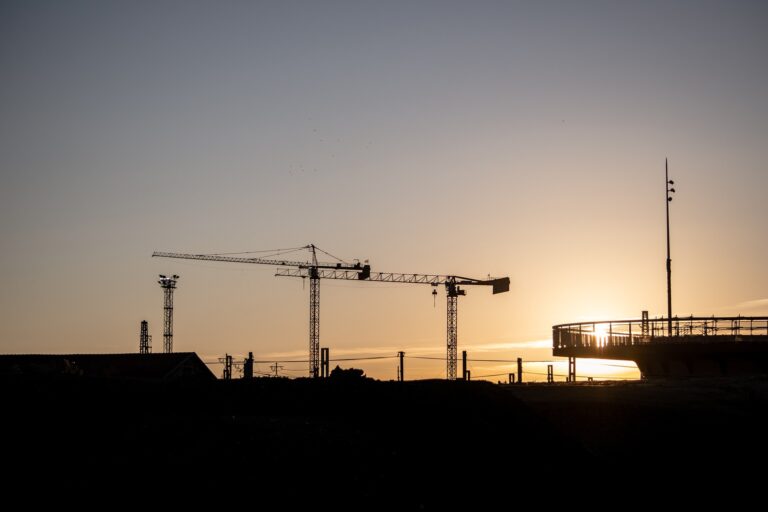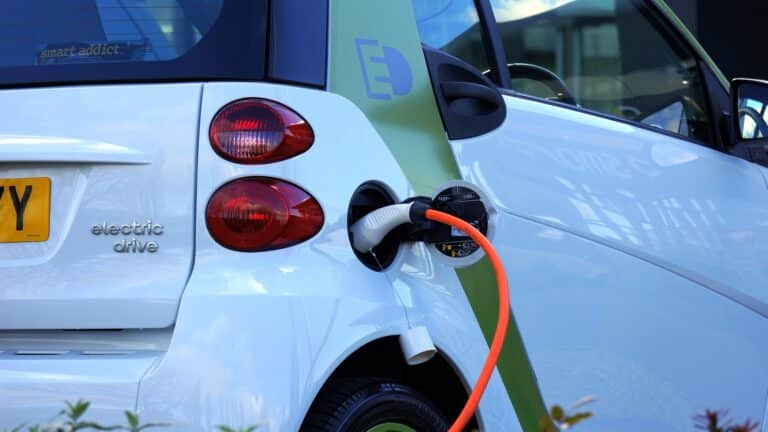China Halts U.S. LNG Imports Amid Tariff War
China has ceased importing liquefied natural gas from the United States since early February, as the ongoing tariff war impacts energy trade.
Current Access Level “I” – ID Only: CUID holders, alumni, and approved guests only
Summaries by David Sandalow, Sally Qiu & Zhiyuan Fan • March 23, 2022
Introduction
On November 17, 2021, New York time/November 18, 2021, Beijing time, the Center on Global Energy Policy at Columbia University and Energy Foundation-China convened an online roundtable on carbon capture, utilization and storage (CCUS) in the United States and China. Scholars, industry officials and policy makers exchanged information and ideas concerning CCUS development in each country. Participants discussed the role of CCUS in achieving net zero emissions, focusing on three topics in particular: CCUS costs, strategies for utilization of carbon dioxide (CO2) and CCUS policies. This report summarizes key points made by participants at the roundtable, which was held under the Chatham House Rule.[1]
Key Themes
In the view of most roundtable participants, CCUS technologies are important for meeting the challenge of climate change and the goals of the Paris Agreement. Participants discussed topics including the potential role for CCUS in deep decarbonization of hard-to-abate industries, production of low-carbon hydrogen at scale and removing carbon dioxide from the atmosphere.
Several participants noted the gap between CCUS deployment today and the deployment that could be required to meet climate goals. By some estimates, CCUS deployment must increase at least 100-fold[2] in the decades ahead to limit warming to 2°C/3.6°F above pre-industrial levels (and even more to limit warming to 1.5°C/2.7°F above those levels).
At least 27 CCUS projects are in operation globally. At least 135 are in the pipeline, at different stages of development. Most projects are in North America or Europe. Among the 70 new CCUS facilities added to the project pipeline in 2021, 41 are in North America and 25 are in Europe.[3]
CCUS technologies are being applied in increasingly diverse sectors, and are now being explored in hard-to-abate industrial sectors including steel and cement as well as in the power sector. Blue hydrogen (steam methane reforming or coal gasification with CCUS) is an especially important application of CCUS, according to some participants. Low-carbon hydrogen may be essential to decarbonizing some sectors such as heavy-duty transportation, and it was noted that blue hydrogen offers a potentially cheap pathway for producing low-carbon hydrogen for at least the next decade and perhaps beyond.[4]
The adoption of more ambitious climate targets is a key driver of the growing momentum behind CCUS. More than 100 countries and several thousand companies have set net-zero targets in the past several years. This ambition can create a virtuous cycle in which governments have strengthened policies to drive private sector investment while the private sector has responded by advancing new projects and developing new business models to reduce costs and risks. This has given rise to CCUS networks and hubs, as well as new strategic business partnerships. There are currently more than 30 CCUS networks in development globally.[5]
The United States has greater experience with CCUS than China. The US first deployed CCUS technologies in 1972 (for enhanced oil recovery). Government grant programs have supported work on CCUS in the United States for almost 15 years. Today, roughly 20 million tons of CO2 are used and/or stored annually in the US. The Chinese government has supported small CCUS pilot projects for many years. Roughly 2 million tons of CO2 are used and/or stored annually in China.[6]
Scaling up CCUS may involve many challenges, including energy penalties (additional energy required to capture, separate, and compress CO2), water consumption and costs, infrastructure issues, financing gaps and policy uncertainty. Continued dialogue between US and Chinese experts can help in meeting these challenges, participants noted.
Carbon Capture Costs
Carbon capture costs vary chiefly as a function of the concentration of CO2 in emissions streams. When CO2 is highly concentrated, such as in many fertilizer and coal-to-chemical plants, carbon capture costs are currently roughly $10/ton CO2. With more dilute streams such as in the steel industry, carbon capture costs can be roughly $50/ton CO2. With even more dilute streams such as from natural gas power plants, costs are currently roughly $100/ton CO2 or more.[7]
These costs are not static. Carbon capture costs have fallen roughly 50 percent in the past 10 years and are expected to fall another 50 percent in the next 10 years, as carbon capture technologies scale.[8]
Technical innovations have the potential to reduce costs by roughly a third, and economies of scale have the potential to reduce costs by another third.[9] New business models and lower costs of capital have the potential to reduce costs as well, according to some participants.
CCUS costs in China are typically lower than world average CCUS costs. Among all costs associated with CCUS in China, roughly 60 percent–80 percent (120–480 RMB/ton-CO2 or $20–$80/ton-CO2) are for carbon capture. The remaining costs are for transportation and storage of CO2.[10]
There are two major cost components of CCUS: capex (equipment, land-use) and opex (energy). In a typical CCUS project at a coal-fired power plant, for example, 16 percent of costs are for capex, with the balance going to opex expenditures such as for steam (27 percent), electricity (32 percent), ammonia reuse (12 percent) and finance (6 percent).[11]
CO2 Utilization
Many products contain carbon atoms, including cement and concrete, aviation fuels and a wide range of chemicals. CO2 captured from emissions streams can be used in making these products, offering significant potential benefits for climate mitigation. Markets for captured CO2 could exceed billions of tons and tens of billions of dollars globally.[12]
Participants noted captured CO2 can be used in a number of ways:
Lifecyle analyses are essential for any CO2 utilization strategy. To the extent that the objective is to contribute to climate mitigation, analyzing the extent to which the CO2 benefits from a utilization strategy outweigh any incremental CO2 emissions is essential.
Lack of infrastructure is a major barrier to greater CO2 utilization in both the US and China. CO2 pipelines will be especially important to growth of a robust market for CO2-based products. Additional zero-carbon electricity generation, along with transmission capacity, is also essential.
The high cost of some CO2 utilization strategies is another major barrier to their deployment. Technical innovations and scale-up are required to bring down costs.
Policy Support
CCUS receives policy support in both China and the US. Participants noted that additional policy support will be important in helping CCUS scale and play an important role in climate mitigation in the decades ahead.
In November 2021, the US and Chinese governments issued their Joint Glasgow Declaration, which says “The two sides intend to cooperate on … deployment and application of technology such as CCUS …”[14]
CCUS has been included in China’s carbon mitigation strategies since the 12th Five-Year Plan (2011–2015). In May 2019, the Ministry of Science and Technology and the Administrative Center for China’s Agenda 21 jointly issued an updated Roadmap for Development of CCUS Technology in China. The roadmap set goals for reducing the cost and energy consumption of CO2 capture by 10 percent to 15 percent in 2030 and by 40 percent to 50 percent by 2040. The roadmap foresees multiple CCUS hubs across the country.[15]
The 14th Five-Year Plan, released in March 2021, highlighted the role of CCUS in low-carbon development and called for implementing near-zero-emissions CCUS demonstration projects.[16] Several CCUS hub pilot projects are in the pipeline, mostly in northwestern provinces.
The close integration between Chinese ministries and state-owned enterprises may facilitate development of large-scale CCUS projects and the rapid scale-up of CCUS in China.
Roundtable participants suggested policy options for enhancing CCUS development in China, including:
The US government has supported CCUS projects with grant programs for many years. In addition, the 45Q tax credit as amended in 2018 provides important incentives for CCUS projects in the US.
In November 2021, President Joe Biden signed the Infrastructure Investment and Jobs Act (sometimes known as the “Bipartisan Infrastructure Bill”). The act provides the largest federal investment in CCUS ever, including:
In addition, pending legislation in the US Congress would, if enacted, amend the 45Q tax credit to provide greater incentives for CCUS development in the US.
Conclusion
Participants agreed that the exchange of views and perspectives had been valuable for all. They welcomed additional opportunities to share information and perspectives on these topics in the months ahead.
Notes
[1] When a meeting is held under the Chatham House Rule, “participants are free to use the information received, but neither the identity nor the affiliation of the speaker(s), nor that of any other participant, may be revealed.” https://www.chathamhouse.org/about-us/chatham-house-rule.
[2] IPCC, Climate Change 2014: Synthesis Report. Contribution of Working Groups I, II and III to the Fifth Assessment Report of the Intergovernmental Panel on Climate Change, eds. Core Writing Team, R.K. Pachauri, and L.A. Meyer, 2015, https://www.ipcc.ch/report/ar5/syr/An IPCC Special Report on the impacts of global warming of 1.5°C above pre-industrial levels and related global greenhouse gas emission pathways, in the context of strengthening the global response to the threat of climate change, sustainable development, and efforts to eradicate poverty, eds. V. Masson-Delmotte et al., 2019, https://www.ipcc.ch/sr15/https://www.iea.org/reports/net-zero-by-2050.
[3] Global CCS Institute, Global Status of CCS 2021: CCS Accelerating to Net Zero, 2021, https://www.globalccsinstitute.com/resources/global-status-report/.
[4] Zhiyuan Fan et al., “Green hydrogen in a Circular Carbon Economy: Opportunities and Limits,” Center on Global Energy Policy, August 2021, https://www.energypolicy.columbia.edu/research/report/green-hydrogen-circular-carbon-economy-opportunities-and-limitsBlue Hydrogen, 2021, https://www.globalccsinstitute.com/resources/publications-reports-research/blue-hydrogen/Hydrogen Economy Outlook: Key Messages, March 30, 2020, https://data.bloomberglp.com/professional/sites/24/BNEF-Hydrogen-Economy-Outlook-Key-Messages-30-Mar-2020.pdf.
[5] Global CCS Institute, Global Status of CCS 2021: CCS Accelerating to Net Zero, 2021, https://www.globalccsinstitute.com/resources/global-status-report/.
[6] Ibid.
[7] Global CCS Institute, Technical Readiness and Costs of CCUS, 2021, https://www.globalccsinstitute.com/wp-content/uploads/2021/04/CCS-Tech-and-Costs.pdf.
[8] Ibid.
[9] Ibid.
[10] Ibid.
[11] National Petroluem Council, Meeting the Dual Challenge: A Roadmap to At-Scale Deployment of Carbon Capture, Use, and Storage, 2019, https://dualchallenge.npc.orghttps://www.globalccsinstitute.com/wp-content/uploads/2021/04/CCS-Tech-and-Costs.pdf.
[12] Amar Bhardwaj, Colin McCormick, and Julio Friedmann, “Opportunities and Limits of CO2 Recycling in a Circular Carbon Economy: Techno-economics, Critical Infrastructure Needs, and Policy Priorities,” Center on Global Energy Policy, May 2021, https://www.energypolicy.columbia.edu/research/report/opportunities-and-….
[13] For example, IEA, Putting CO2 to Use: Creating Value from Emissions, September 2019, https://www.iea.org/reports/putting-co2-to-use.
[14] US Department of State, “U.S.-China Joint Glasgow Declaration on Enhancing Climate Action in the 2020s,” November 10, 2021, 7(e), https://www.state.gov/u-s-china-joint-glasgow-declaration-on-enhancing-climate-action-in-the-2020s/.
[15] IEA, Energy Technology Perspectives 2020: Special Report on Carbon Capture Utilisation and Storage – CCUS in clean energy transitions, September 2020, p. 142, https://iea.blob.core.windows.net/assets/181b48b4-323f-454d-96fb-0bb1889d96a9/CCUS_in_clean_energy_transitions.pdf.
[16] National Development and Reform Commission, “中华人民共和国国民经济和社会发展第十四个五年规划和2035年远景目标纲要,”, March 23, 2021, https://www.ndrc.gov.cn/fggz/fzzlgh/gjfzgh/202103/t20210323_1270102.html?code=&state=123.


Full report
Summaries by David Sandalow, Sally Qiu & Zhiyuan Fan • March 23, 2022